I am trying to use mclapply to parallelize cross-validation for modeling fitting procedure for very large design matrix X (~10GB) and response vector y. Let's say X is of dimension n-by-p: n=1000, p=1,000,000. Since X is very huge, it's backed as big.matrix object, stored in disk, and accessed using methods in R package bigmemory.
The workflow for a 4-fold cross validation is as follows.
- Set up indices vector
cv.indwith lengthn, which stores a sequence of numbers from 1 to 4, indicating which observation inXbelongs to which fold for CV. - Set up 4 cores. In the i-th core, copy corresponding training and test sub matrices for the i-th fold CV.
- Fit a model for each fold in each core.
- Collect results, return.
The cross-validation function looks like following.
cv.ncvreg <- function(X, y, ncore, nfolds=5, seed, cv.dir = getwd(),
cv.ind) {
## some more setup ...
## ...
## ...
## pass the descriptor info to each core ##
xdesc <- describe(X)
## use mclapply instead of parLapply
fold.results <- parallel::mclapply(X = 1:nfolds, FUN = cvf, XX=xdesc, y=y,
cv.dir = cv.dir, cv.ind=cv.ind,
cv.args=cv.args,
mc.set.seed = seed, mc.silent = F,
mc.cores = ncore, mc.preschedule = F)
## return results
}
The R function cvf is run in each core. It copies training/test matrices for i-th fold as two big.matrix objects, fits a model, computes some statistics, and returns results.
cvf <- function(i, XX, y, cv.dir, cv.ind, cv.args) {
## argument 'XX' is the descriptor for big.matrix
# reference to the big.matrix by descriptor info
XX <- attach.big.matrix(XX)
cat("CV fold #", i, "\t--Copy training-- Start time: ", format(Sys.time()), "\n\n")
## physically copy sub big.matrix for training
idx.train <- which(cv.ind != i) ## get row idx for i-th fold training
deepcopy(XX, rows = idx.train, type = 'double',
backingfile = paste0('x.cv.train_', i, '.bin'),
descriptorfile = paste0('x.cv.train_', i, '.desc'),
backingpath = cv.dir)
cv.args$X <- attach.big.matrix(paste0(cv.dir, 'x.cv.train_', i, '.desc'))
cat("CV fold #", i, "\t--Copy training-- End time: ", format(Sys.time()), "\n\n")
cat("CV fold #", i, "\t--Copy test-- Start time: ", format(Sys.time()), "\n\n")
## physically copy remaining part of big.matrix for testing
idx.test <- which(cv.ind == i) ## get row idx for i-th fold testing
deepcopy(XX, rows = idx.test, type = 'double',
backingfile = paste0('x.cv.test_', i, '.bin'),
descriptorfile = paste0('x.cv.test_', i, '.desc'),
backingpath = cv.dir)
X2 <- attach.big.matrix(paste0(cv.dir, 'x.cv.test_', i, '.desc'))
cat("CV fold #", i, "\t--Copy test-- End time: ", format(Sys.time()), "\n\n")
# cv.args$X <- XX[cv.ind!=i, , drop=FALSE]
cv.args$y <- y[cv.ind!=i]
cv.args$warn <- FALSE
cat("CV fold #", i, "\t--Fit ncvreg-- Start time: ", format(Sys.time()), "\n\n")
## call 'ncvreg' function, fit penalized regression model
fit.i <- ncvreg(X=cv.args$X, y=cv.args$y, family=cv.args$family,
penalty = cv.args$penalty,lambda = cv.args$lambda, convex = cv.args$convex)
# fit.i <- do.call("ncvreg", cv.args)
cat("CV fold #", i, "\t--Fit ncvreg-- End time: ", format(Sys.time()), "\n\n")
y2 <- y[cv.ind==i]
yhat <- matrix(predict(fit.i, X2, type="response"), length(y2))
loss <- loss.ncvreg(y2, yhat, fit.i$family)
pe <- if (fit.i$family=="binomial") {(yhat < 0.5) == y2} else NULL
list(loss=loss, pe=pe, nl=length(fit.i$lambda), yhat=yhat)
}
Up to this point, the code works very well when the design matrix X is not too large, say n=1000, p=100,000 with size ~1GB. However, if p=1,000,000 hence the size of X becomes ~10GB, the model fitting procedure in each core runs like forever!!!!! (the following portion):
#...
cat("CV fold #", i, "\t--Fit ncvreg-- Start time: ", format(Sys.time()), "\n\n")
## call 'ncvreg' function, fit penalized regression model
fit.i <- ncvreg(X=cv.args$X, y=cv.args$y, family=cv.args$family,
penalty = cv.args$penalty,lambda = cv.args$lambda, convex = cv.args$convex)
# fit.i <- do.call("ncvreg", cv.args)
cat("CV fold #", i, "\t--Fit ncvreg-- End time: ", format(Sys.time()), "\n\n")
#...
Notes:
- If I run 'ncvreg()' on the raw matrix (10GB) once, it takes ~2.5 minutes.
- If I run the cross validation sequentially using
forloop but notmclapply, the code works well, the model fitting for each fold 'ncvreg()' works fine too (~2 minutes), though the whole process takes ~25 minutes. - I tried 'parLapply' at first with the same issue. I switched to 'mclapply' due to reason here.
- The data copy step (i.e.,
deepcopyportion) in each core works well, and takes ~2 mins to get the training and test data sets copied and file-backed on disk. - I tried to monitor the CPU usage, below is one screenshot. As we can see, in the left figure, each of 4 rsessions takes ~25% CPU usage, while there is a process, kernel_task uses up ~100% CPU. As time elapses, kernel_task can take even 150% CPU. In addition, the CPU history panel (right bottom) shows that most of the CPU usage is from system, not user, since the red area dominates green area.
My questions:
- Why does the model fitting process take forever when in parallel? What could be possible reasons?
- Am I on the right track to parallelize the CV procedure for big.matrix? Any alternative ways?
I appreciate any insights for helping fix my issue here. Thanks in advance!!
